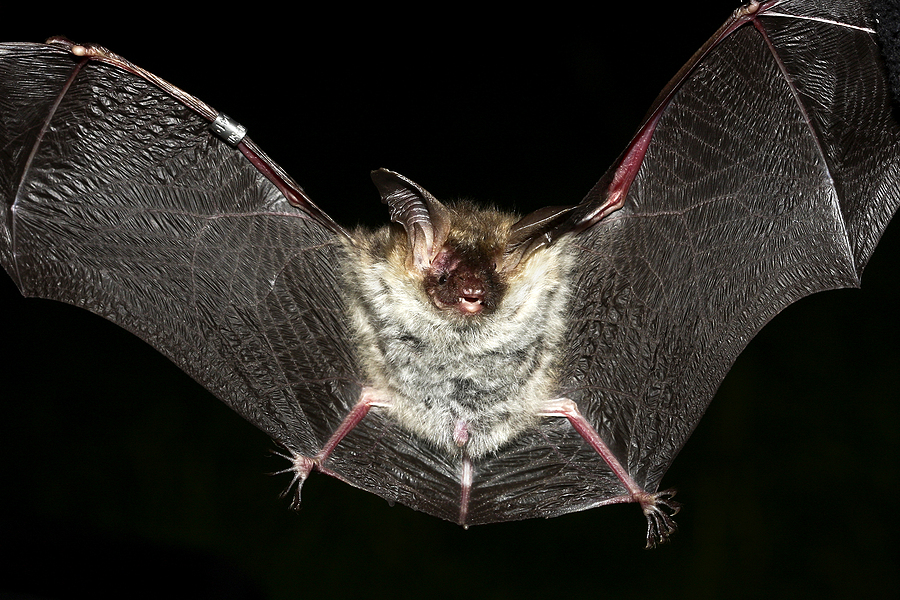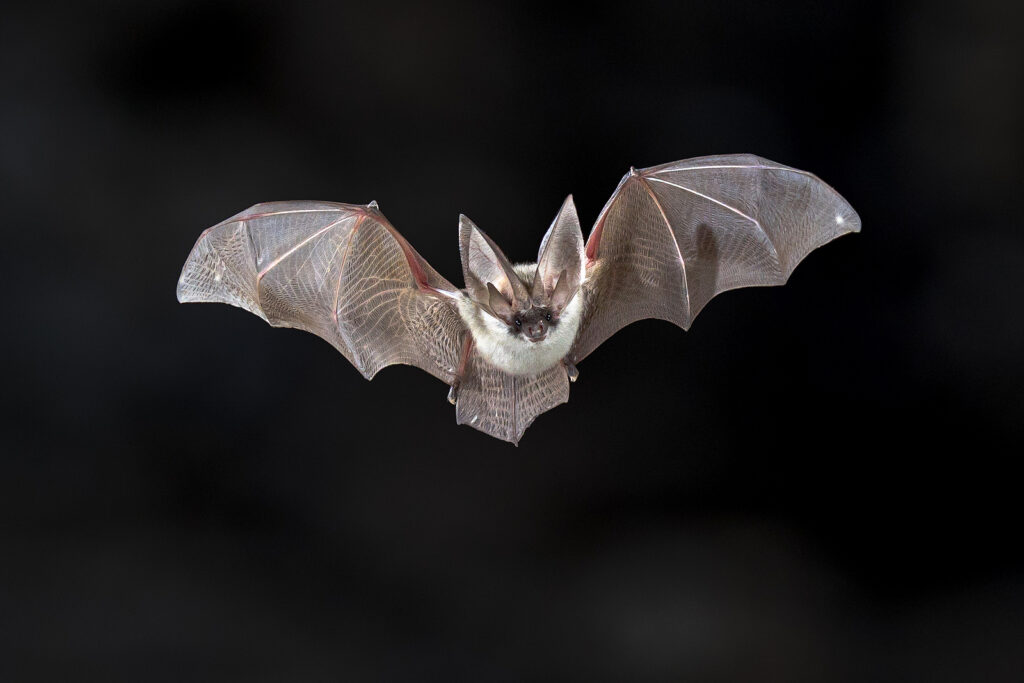There are several species of bats found in Virginia. The most common bat in Virginia is the little brown bat. Other species include the big brown bat, the Mexican free-tailed bat, the silver-haired bat, and the beloved state bat, the Virginia Big-eared bat! Although all of these species are important to the ecosystem and play a role in controlling insect populations, let’s take a closer look at our state bat by reviewing some interesting facts about them!

Facts About the Virginia Big-Eared Bat
The Virginia Big-eared bat (Corynorhinus townsendii virginianus) is a medium-sized bat, with adults measuring 4.5-5.7 cm (1.8-2.2 in) in body length and 7-9 cm (2.8-3.5 in) in wingspan. The fur on the back is brown or black, while the belly is paler. As its name suggests, this bat has large, conspicuous ears.
This bat is found in a variety of habitats, including forests, caves, and mines. It is a forest Dependent species, meaning that it requires forested habitat to survive. The Virginia Big-eared bat typically roosts alone or in small groups. It is known to form maternity colonies of up to 100 individuals.
As an insectivore, it primarily feeds on moths, but also mosquitos, gnats, flies, grasshoppers, and more. Like all other microbats, our state bat uses echolocation to locate its prey and navigate with heightened precision in the dark of night.
Fun Facts About All Bats
Bats are nocturnal creatures, so they are most active at night. During the day, they roost in trees, caves, and other dark places. Bats are very good flyers and can travel long distances in search of food.
Most bats eat insects. They use their sharp teeth to bite through the exoskeleton of their prey. Bats have a very good sense of smell and can locate their prey by following the scent of the insects.
Bats are important to the ecosystem because they help control the population of insects. Without bats, there would be more mosquitoes, beetles, and other pests. Bats eat millions of insects every night!
How to Support Local Bat Populations
There are several things you can do to help bats. One way is to provide a roosting site for them. You can do this by putting up a bat house in your yard. Another way to help bats is to avoid using pesticides and insecticides. These chemicals can kill the insects that bats eat.
If you see a bat during the day, it is probably sick or injured. Bats are very susceptible to diseases, so it is important not to handle them. If you find a sick or injured bat, please contact your local wildlife rehabilitator for help.
Are you trying to manage a nuisance bat problem in or around your property? Contact Virginia Bat Pros at 804-729-9097 for licensed and insured bat removal and control you can afford. We serve residential and commercial clients.
Related Posts:
Which Bats are Native to the State of Virginia?
Interesting Facts About the State Bat of Virginia
FAQS About Endangered Bats


